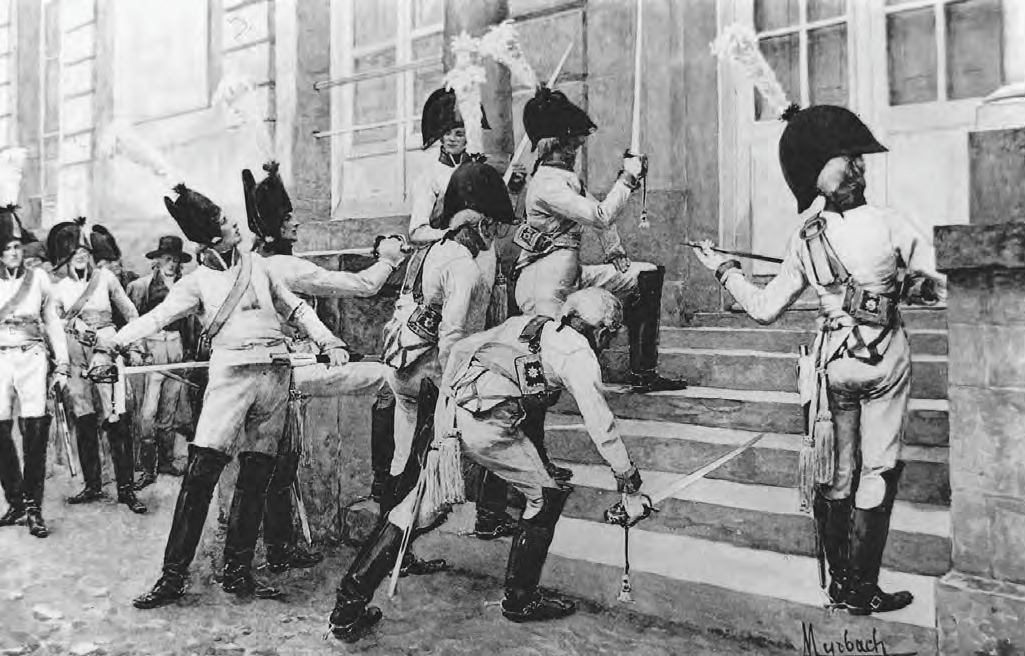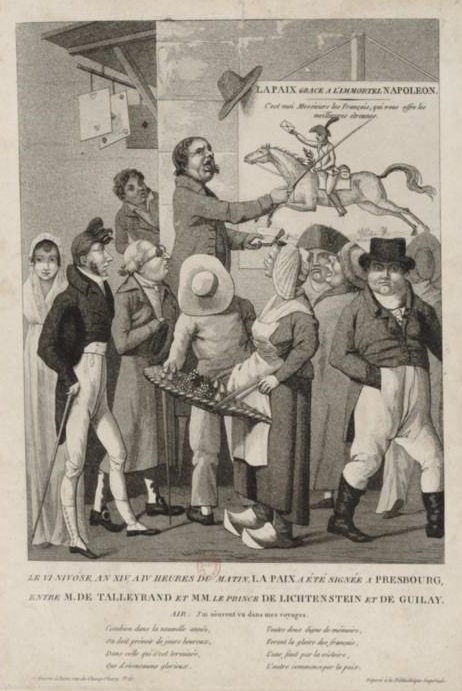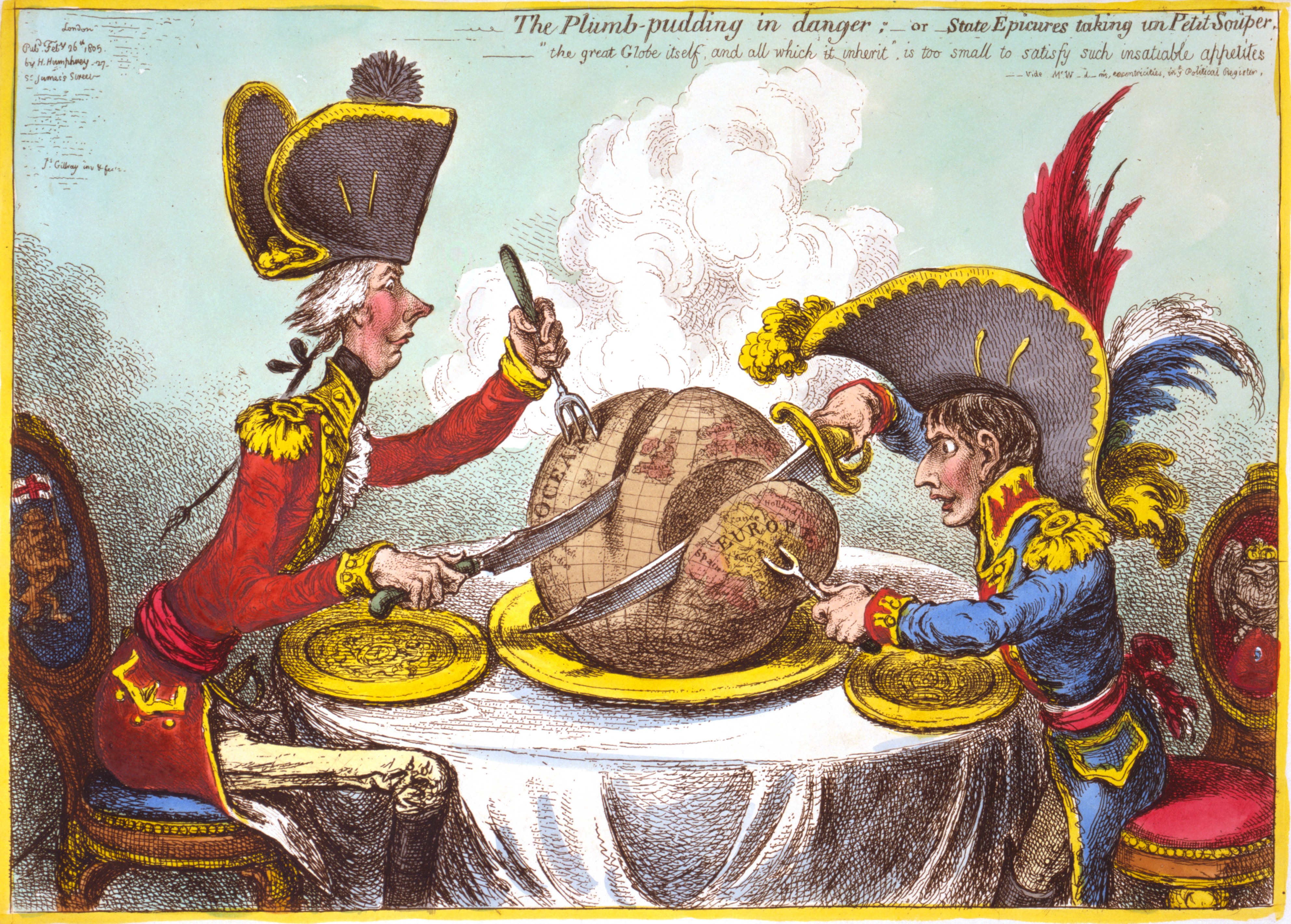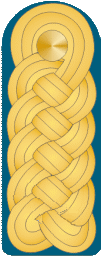|
Dalmatian Campaign (1809)
The Dalmatian Campaign saw several battles fought between 30 April and 21 May 1809 by Auguste Marmont's First French Empire soldiers and Andreas von Stoichevich's Austrian Empire troops. The Austrians drove the French from their positions on the Zrmanja River at the end of April. But in mid-May, the French counterattack forced back the Austrians. The defenders offered stout resistance, but ultimately Marmont broke out of Dalmatia and joined Emperor Napoleon's army near Vienna with over 10,000 men. The campaign was fought during the War of the Fifth Coalition, part of the Napoleonic Wars. Dalmatia is part of the modern-day nation of Croatia. At the beginning of the conflict, the Austrians thrust across the Zrmanja and forced the French back to the fortified cities. After the Austrian defeat and subsequent retreat from Italy of the army of Archduke John of Austria, Marmont launched his own offensive. The French beat the Austrians at Pribudić, capturing Stoichevich, and moved ... [...More Info...] [...Related Items...] OR: [Wikipedia] [Google] [Baidu] |
War Of The Fifth Coalition
The War of the Fifth Coalition was a European conflict in 1809 that was part of the Napoleonic Wars and the Coalition Wars. The main conflict took place in central Europe between the Austrian Empire of Francis II, Holy Roman Emperor, Francis I and Napoleon I of France, Napoleon's First French Empire, French Empire. The French were supported by their client states, including the Kingdom of Italy (Napoleonic), Kingdom of Italy, the Confederation of the Rhine and the Duchy of Warsaw. Austria was supported by the Fifth Coalition which included the United Kingdom of Great Britain and Ireland, United Kingdom, Kingdom of Portugal, Portugal, Spain and the Kingdoms of Kingdom of Sardinia, Sardinia and Kingdom of Sicily, Sicily, though the latter two took no part in the fighting. By the start of 1809 much of the French army was committed to the Peninsular War against Britain, Spain and Portugal. After France withdrew 108,000 soldiers from Germany, Austria attacked France to seek the ... [...More Info...] [...Related Items...] OR: [Wikipedia] [Google] [Baidu] |
Battle Of Wagram
The Battle of Wagram (; 5–6 July 1809) was a military engagement of the Napoleonic Wars that ended in a costly but decisive victory for Emperor Napoleon's French and allied army against the Austrian army under the command of Archduke Charles of Austria-Teschen. The battle led to the breakup of the Fifth Coalition, the Austrian and British-led alliance against France. Wagram was the largest battle in European history up to its time. In 1809, the French military presence in the Confederation of the Rhine was diminished as Napoleon transferred a number of soldiers to fight in the Peninsular War. As a result, the Austrian Empire saw its chance to recover some of its former sphere of influence and invaded the Kingdom of Bavaria, a French ally. Recovering from his initial surprise, Napoleon beat the Austrian forces and occupied Vienna at the beginning of May 1809. Despite the string of sharp defeats and the loss of the empire's capital, Archduke Charles salvaged an army, with which ... [...More Info...] [...Related Items...] OR: [Wikipedia] [Google] [Baidu] |
Marmont
Auguste Frédéric Louis Viesse de Marmont (20 July 1774 – 22 March 1852) was a French general and nobleman who rose to the rank of Marshal of the Empire and was awarded the title (french: duc de Raguse). In the Peninsular War Marmont succeeded the disgraced André Masséna in the command of the French army in northern Spain, but lost decisively at the Battle of Salamanca. At the close of the War of the Sixth Coalition, Marmont went over to the Restoration, and remained loyal to the Bourbons through the Hundred Days. This gave Marmont a reputation as a traitor among the remaining Bonapartists, and in French society more broadly. He led the royalist Paris garrison during the July Revolution in 1830, but his efforts proved incapable of quelling the revolution, leading King Charles X to accuse Marmont of betraying the Bourbons as he had betrayed the Bonapartes. Marmont departed France with Charles's entourage and never returned to France. Spending his exile mostly in Vienna and ... [...More Info...] [...Related Items...] OR: [Wikipedia] [Google] [Baidu] |
War Of The Fourth Coalition
The Fourth Coalition fought against Napoleon's French Empire and were defeated in a war spanning 1806–1807. The main coalition partners were Prussia and Russia with Saxony, Sweden, and Great Britain also contributing. Excluding Prussia, some members of the coalition had previously been fighting France as part of the Third Coalition, and there was no intervening period of general peace. On 9 October 1806, Prussia declared war on France and joined a renewed coalition, fearing the rise in French power after the defeat of Austria and establishment of the French-sponsored Confederation of the Rhine in addition to having learned of French plans to cede Prussian-desired Hannover to Britain in exchange for peace. Prussia and Russia mobilized for a fresh campaign with Prussia massing troops in Saxony. Napoleon decisively defeated the Prussians in an expeditious campaign that culminated at the Battle of Jena–Auerstedt on 14 October 1806. French forces under Napoleon occupied Prus ... [...More Info...] [...Related Items...] OR: [Wikipedia] [Google] [Baidu] |
II Corps (Grande Armée)
The II Corps of the '' Grande Armée'' was a French military unit that existed during the Napoleonic Wars. Campaigns At its formation in 1805, General Auguste de Marmont was appointed commander of the II Corps. Batavian Division, commanding officer Général de Division Count Jean-Baptiste DumonceauGeorge Nafziger, Batavian Division French II Corps 29 November 1805', United States Army Combined Arms Center * 1st Batavian Dragoon Regiment (2 Squadrons) * 1st Batavian Hussar Regiment (2 Squadrons) * 1st & 2nd Battalions, 1st Batavian Regiment * 1st & 2nd Battalions, 2nd Batavian Regiment * 1st & 2nd Battalions, 6th Batavian Regiment * 1st & 2nd Battalions, Waldeck Regiment * 1st Battalion, 1st Batavian Light Regiment * 2nd Battalion, 2nd Batavian Light Regiment * 1st Foot Artillery War of the Third Coalition The corps participated in the Ulm campaign before advancing southeast to serve as a flank guard. Still under Marmont, the troops then served as the garrison of t ... [...More Info...] [...Related Items...] OR: [Wikipedia] [Google] [Baidu] |
Camp De Boulogne
The Boulogne camp may designate two military camps around Boulogne-sur-Mer in France. First camp The first camp was prepared by Julius Caesar in 54 BC to prepare the fleet for his second expedition to Britain. One hypothesis is that Julius Caesar set up his camp at the current location of the old City of Boulogne-sur-Mer. Some historians believe that the Old City was built on the camp; at a vicinity to '' Itius port'' which he cites in Chapter IV of its Gallic Wars : : ''Caesar returns in Hither Gaul, and from there to the army. When he got there, he visited all neighborhoods, and finds that the singular activity of the soldiers had managed, despite extreme shortages of all things, to build about six hundred ships of the form described above and twenty eight galleys, all ready for sea in a few days. After giving praise to soldiers and those who had led the work, he instructs his intentions and ordered them to go all the Itius port, where he knew the ride in Brittany is v ... [...More Info...] [...Related Items...] OR: [Wikipedia] [Google] [Baidu] |
Grande Armée
''La Grande Armée'' (; ) was the main military component of the French Imperial Army commanded by Emperor Napoleon Bonaparte during the Napoleonic Wars. From 1804 to 1808, it won a series of military victories that allowed the French Empire to exercise unprecedented control over most of Europe. Widely acknowledged to be one of the greatest fighting forces ever assembled in history, it suffered enormous losses during the disastrous invasion of Russia in 1812, after which it never recovered its strategic superiority. The ''Grande Armée'' was formed in 1804 from the ''L'Armée des côtes de l'Océan'' (Army of the Ocean Coasts), a force of over 100,000 men that Napoleon had assembled for the proposed invasion of Britain. Napoleon later deployed the army in eastern Europe to eliminate the combined threat of Austria and Russia, which were part of the Third Coalition assembled against France. Thereafter, the name ''Grande Armée'' was used for the principal French Army deploy ... [...More Info...] [...Related Items...] OR: [Wikipedia] [Google] [Baidu] |
Kingdom Of Italy (Napoleonic)
The Kingdom of Italy (1805–1814; it, Regno d'Italia; french: Royaume d'Italie) was a kingdom in Northern Italy (formerly the Italian Republic) in personal union with Napoleon I's French Empire. It was fully influenced by revolutionary France and ended with Napoleon's defeat and fall. Its government was assumed by Napoleon as King of Italy and the viceroyalty delegated to his stepson Eugène de Beauharnais. It covered some of Piedmont and the modern regions of Lombardy, Veneto, Emilia-Romagna, Friuli Venezia Giulia, Trentino, South Tyrol, and Marche. Napoleon I also ruled the rest of northern and central Italy in the form of Nice, Aosta, Piedmont, Liguria, Tuscany, Umbria, and Lazio, but directly as part of the French Empire, rather than as part of a vassal state. Constitutional statutes The Kingdom of Italy was born on 17 March 1805, when the Italian Republic, whose president was Napoleon Bonaparte, became the Kingdom of Italy, with the same man (now styled Napoleon I) as ... [...More Info...] [...Related Items...] OR: [Wikipedia] [Google] [Baidu] |
Istria
Istria ( ; Croatian language, Croatian and Slovene language, Slovene: ; ist, Eîstria; Istro-Romanian language, Istro-Romanian, Italian language, Italian and Venetian language, Venetian: ; formerly in Latin and in Ancient Greek) is the largest peninsula within the Adriatic Sea. The peninsula is located at the head of the Adriatic between the Gulf of Trieste and the Kvarner Gulf. It is shared by three countries: Croatia, Slovenia, and Italy.Marcel Cornis-Pope, John Neubauer''History of the literary cultures of East-Central Europe: junctures and disjunctures in the 19th And 20th Centuries'' John Benjamins Publishing Co. (2006), Alan John Day, Roger East, Richard Thomas''A political and economic dictionary of Eastern Europe'' Routledge, 1sr ed. (2002), Croatia encapsulates most of the Istrian peninsula with its Istria County. Geography The geographical features of Istria include the Učka/Monte Maggiore mountain range, which is the highest portion of the Ćićarija/Cicceria ... [...More Info...] [...Related Items...] OR: [Wikipedia] [Google] [Baidu] |
Treaty Of Pressburg (1805)
The Peace of Pressburg; french: Traité de Presbourg was signed in Pressburg (today Bratislava) on 26 December 1805 between French Emperor Napoleon Bonaparte and Holy Roman Emperor Francis II, as a consequence of the French victory over the Russians and Austrians at the Battle of Austerlitz (2 December). A truce was agreed on 4 December, and negotiations for the treaty began. The treaty was signed by Johann I Joseph, Prince of Liechtenstein, and the Hungarian Count Ignác Gyulay for the Austrian Empire and Charles Maurice de Talleyrand for France. Beyond the clauses establishing "peace and amity" and the Austrian withdrawal from the Third Coalition, the treaty also mandated substantial territorial concessions by the Austrian Empire. The French gains of the previous treaties of Campo Formio and Lunéville were reiterated, while recent Austrian acquisitions in Italy and southern Germany were ceded to France and Bavaria, respectively. The scattered Austrian holdings in Swabia were ... [...More Info...] [...Related Items...] OR: [Wikipedia] [Google] [Baidu] |
War Of The Third Coalition
The War of the Third Coalition) * In French historiography, it is known as the Austrian campaign of 1805 (french: Campagne d'Autriche de 1805) or the German campaign of 1805 (french: Campagne d'Allemagne de 1805) was a European conflict spanning the years 1805 to 1806. During the war, France and its client states under Napoleon I opposed an alliance, the Third Coalition, made up of the United Kingdom, the Holy Roman Empire, the Russian Empire, Naples, Sicily and Sweden. Prussia remained neutral during the war. Britain had already been at war with France following the breakdown of the Peace of Amiens and remained the only country still at war with France after the Treaty of Pressburg. From 1803 to 1805, Britain stood under constant threat of a French invasion. The Royal Navy, however, secured mastery of the seas and decisively destroyed a Franco-Spanish fleet at the Battle of Trafalgar in October 1805. The Third Coalition itself came to full fruition in 1804–05 as Napole ... [...More Info...] [...Related Items...] OR: [Wikipedia] [Google] [Baidu] |
General Of Division
Divisional general is a general officer rank who commands an army division. The rank originates from the French (Revolutionary) System, and is used by a number of countries. The rank is above a brigade general, and normally below an army corps general. The rank is mostly used in countries where it is used as a modern alternative to a previous older rank of major-general or lieutenant-general. Specific countries Brazil The Brazilian rank ''general-de-divisão'' translates literally as "general of division", and is used by the army. This rank is equivalent to lieutenant-general. The air force equivalent is ''major-brigadeiro''(literally "major-brigadier"). The navy equivalent is ''vice-almirante'' (literally, vice-admiral) Chile The Chilean rank ''general de división'' translates literally as "general of division", and is used by the army. This rank is equivalent to lieutenant-general. The air force equivalent is ''general de aviación'' (literally "aviation general"). Thes ... [...More Info...] [...Related Items...] OR: [Wikipedia] [Google] [Baidu] |







